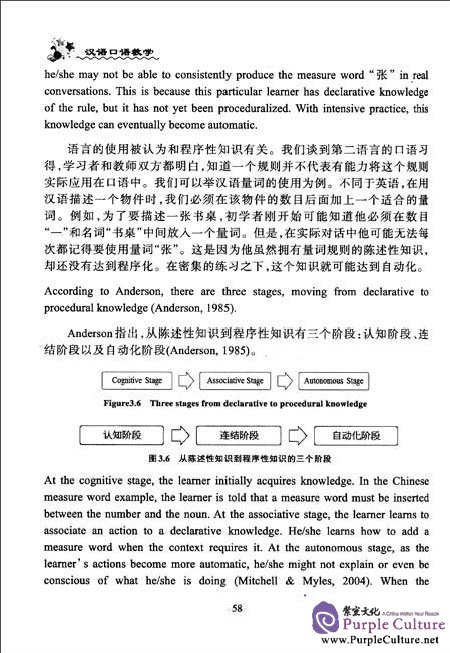Sample Pages Preview

To understand TBLI, we need to first define what a task is. In the context oflanguage instruction, Bygate, Skehan, and Swain (2001) defined tasks as "anactivity which requires learners to use language, with emphasis on meaning, toattain an objective" (p. 11). Brown (2007) provided a very similar, yet, accordingto him, a better-understood definition of tasks by quoting one of Skehan' s earlierdescription : "a task is an activity in which meaning is primary, there is a problemto solve and relationship to real-world activities, with an objective that can beassessed in terms of an outcome" (p. 242). Skehan, based on a review of task-basedliterature, presented several main features of a task in instruction:
要了解任务型语言教学模式,我们首先必须了解什么是任务。在语言教学界,根据Bygate,Skehan and Swain 2001年发表的研究,任务被定义为一种要求学习者通过语言的使用达到某种目标的有意义的活动(p.11)。以上述定义为基础,Brown(2007)提出了一个非常相似,但在他看来更为恰当的定义。他引用Skehan早期关于任务的描述:“任务是一种以意义为核心的活动。这一活动的目的在于解决一个与现实生活相关的问题。同时,活动结果可以用来评估检验活动目标的完成度。”(p.242)在综合与任务相关的文献后,Skehan(1997:95)提出任务在语言教学中最显著的几个特点:
Meaning is primary
Learners are not given other people' s meanings to regurgitate
There is some sort of relationship to comparable real-world activities
Task completion has some priority
The assessment of the task is in terms of outcome. (Skehan, 1998, p. 95)
意义是关键
学习者不是简单复述其他人所表达的意义
任务与现实生活中的活动相关
任务完成具有某种程度的优先性
任务的评估取决于任务的结果。
